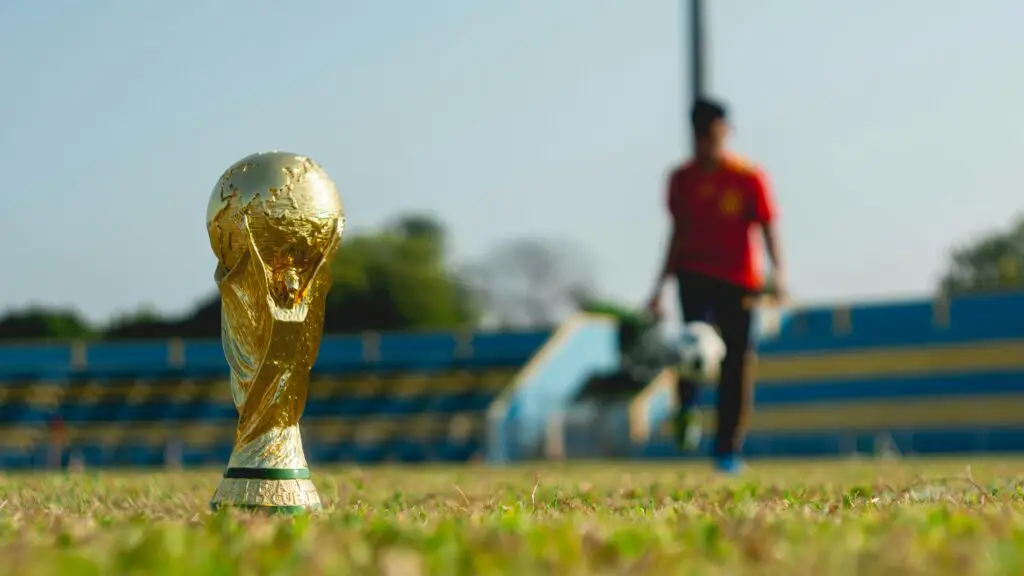The excitement around the FIFA World Cup 2026 is genuine and palpable. For the first time, three nations will jointly host this tournament: Canada, Mexico, and the United States. But before the teams can compete for glory, they must traverse through the grueling path that is the World Cup qualifiers.
This article gives an insight into the FIFA World Cup 2026 qualifiers, how the qualification process works, and what one can expect as teams worldwide intend to contend for a spot in the most awaited footballing affair of the decade.
The Qualification Process
The FIFA World Cup 2026 qualifiers are beginning a new chapter in the international football arena. There are varying qualification processes in all regions, with different formats and criteria considered in each. This scenario lends itself to a mix of cultures on the pitch, creating tantalizing setups for the more epic intercontinental reaches.
Europe (UEFA)
The European qualification process for the World Cup in 2026 entails a group stage followed by playoffs for the additional selection of teams. Very competitive, with 16 automatic spots given to the European sides, it is that sort of qualification. The teams will play in groups, and the top teams from each group will walk into direct qualification.
Besides that, some playoff spots will be up for grabs, wherein the best-performing runners-up and teams from the Nations League will fight for the rest. These qualifiers are expected to be fierce, featuring many giants like Germany, France, Spain, and Italy as they vie for their spots.
South America (CONMEBOL)
The South American qualifiers, which are very competitive with a high standard of play, will see 10 teams fighting for just 4.5 spots. This qualification body includes a round-robin system whereby these teams play every other home and away. Here, the top four teams will directly qualify, and the fifth will play in an intercontinental playoff.
With powerhouse teams such as Brazil, Argentina, and Uruguay, the South American qualifiers must be some badass football in the run-up to the 2026 World Cup.
North and Central America (CONCACAF)
The qualification process for CONCACAF, representing the North, Central America and Caribbean states, will receive an expansion this time around. Mexico, Canada, and the U.S.A. are already assured spots as host nations; however, the remaining countries will contend for the other 3.5 spots.
The qualification process in CONCACAF will be quite something, in that it has many competition rounds that will eventually head into the final group stage, especially since the qualifying teams will secure a place in the tournament.
Africa (CAF)
Now, for football in Africa. 54 countries are fighting for a World Cup ticket. Qualification will occur in stages, with the last round being knockouts. Countries like Senegal, Nigeria, and Egypt toppled over will be spilling a lot of stints during an African qualifier.
Asia (AFC)
In the Asian qualifiers for the World Cup 2026, there will be 46 teams contesting four and a half berths. The qualification system consists of several rounds of play, with a final round of home-and-away games. Automatic qualification will be given to the top teams in the final round, while the team finishing fifth will go to an intercontinental playoff.
Continually seen as potential qualifiers, Japan, South Korea, and Iran will be joined by Australia and China, who will be putting up a strong challenge for qualification.
Oceania (OFC)
Oceania’s qualifying arrangements are ever difficult—for any country in this region striving-hard for glory. The outcome will bring in another 0.5 slots for the World Cup, meaning the top-of-the-table side will enter the intercontinental playoff. New Zealand and the Solomon Islands are often a major force during the qualifiers; nevertheless, competition is stiff in this small yet very passionate region of football.
The Impact of the Expanded Format
One of the major changes in the 2026 World Cup will be the tournament’s expansion from 32 to 48 teams. The change will lead to even more teams qualifying from each region, thereby putting even more stress on the relevance of the qualification process for the likely less-fancied nations.
In other words, more countries now have that common chance of witnessing World Cup football, and with that, the very chance for some more cheering by so many followers from around the globe for their national teams. The move has received widespread acclaim in that it grows the reach of the tournament while giving these lesser-footballing nations a stronger chance to qualify.
Key Dates and Milestones
The qualification process for the 2026 FIFA World Cup will commence in 2023 and finish in 2025. Each region will have its schedule, but all teams will hope to secure their place early. The last round of qualifications will be held in late 2025, while the playoffs and intercontinental matches will be held in the months leading to World Cup commencement.
What to Expect from the 2026 World Cup
The qualifiers served to present the biggest and most universal tournament to the history of World Cup, very much look forward by thousands of fans. In great anticipation are awesome games, unknown football developing nations, and longstanding players such as Lionel Messi, Cristiano Ronaldo, and Kylian Mbappé clashing on the world stage.
Whether a football fanatic or simply fond of all the excitement that comes with competing, the rounds of the 2026 FIFA World Cup qualifiers will orient and provide a lot of drama, excitement, and unforgettable events as teams fight for the right to be among those competing-for-honours in the biggest sporting events on the face of the earth.
Conclusion
The 2026 FIFA World Cup has come to life, and every nation will work in earnest to try to get a place in this tournament. In other words, the expanded format plus rigorous regional competition will ensure the qualifiers are as exciting as the tournament proper.
